|
2017 Airshows
Brunswick,
GA B-25s
at Urbana, OH
B-25 Fly-Over the
National Museum of the USAF
SC National Guard Air
and Ground Expo
Dayton, OH
Goshen, IN
Tarkio, MO
Westfield, MA
Wings over Waukegan, IL
Colorado Springs, CO
Pikes Peak Regional Airshow Warbird Photo Review
Warbirds at Colorado Springs Airport - September 23-24, 2017 -
Photos taken Saturday September 23, 2017.
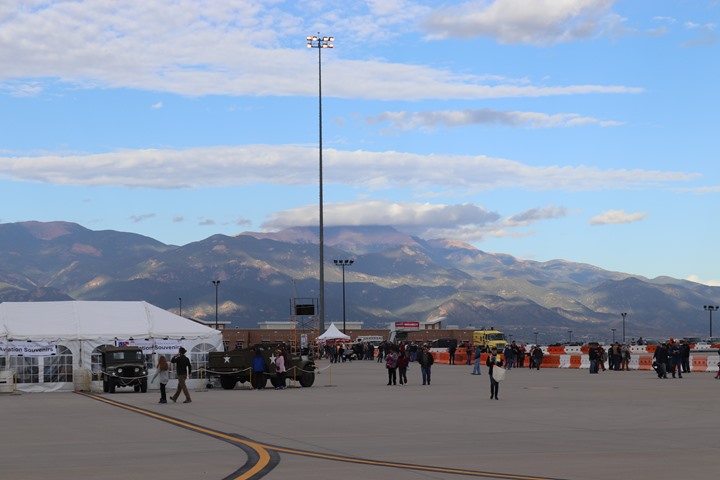
My first picture of the day at 8:35 AM. The summit of Pikes Peak
is in the clouds at 14,115 feet. The Colorado Springs airport has an
elevation of 6,187. I have driven the 19 mile road to the summit
of Pikes Peak four times, and taken the cog railway once. For this trip I did
not get back up the mountain.
The sun on the mountain
with the blue sky is deceptive. In the foreground it can be noted
that it is cloudy at the airport. This was one of three times
during the day I would be able to photograph with a blue sky and
sunlight. None of the three times lasted very long.
I had been planning to attend the Pikes Peak Airshow ever since it came
up on the 2017 Thunderbird schedule. It was not the Thunderbirds that
attracted me, but the large selection of warbirds that were involved,
many from the new National Museum of WWII Aviation (NMWWIIA) located at
the airport. When I was last in Colorado Springs in 2010, the
museum was not there. It arrived in 2012, and had its first and
only airshow previous to this one in 2014. It should be noted that
the NMWWIIA is one corporate entity, while the warbirds in the museum
are owned by persons who have done well in life financially. These
warbirds are in other corporations.
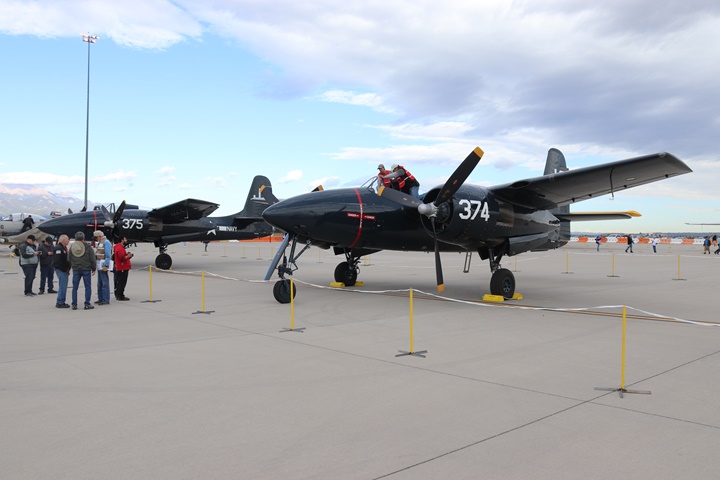
Two of the warbirds located at the NMWWIIA
are these Grumman Tigercats. Both were scheduled to fly in the
show with Steve Hinton doing an aerobatic demonstration. Note the
numbers on the nacelles. These represent Grumman sequential serial
numbers 80374 and 80375 that theses two Tigercats have. Other
warbirds from the museum at the show were a P-38, SBD, AD-5, (2)TBMS,
P-47, B-25, PBY, HU-16, and F3F. There are other warbirds under
restoration at Westpac, which also moved to Colorado Springs in 2012,
and is responsible for the restorations that are displayed at the
museum..
The Location: The
show site was in the southeast end of the airport south of runway 17L
which is 13,500 feet in length. Airshow center was south of the
end of the runway. Luckily the wind was from the south during the
show which allowed the spectators to watch the aircraft go by after
take-off. If the wind had been from the north, the aircraft would
have taken off away from the crowd. A docent at one of the local
aviation museums I visited earlier in the week told me that the ramp
where the crowd and aircraft were located was big enough to hold five
C-5s at one time. I did not understand the significance of this
until I was at the show and took the photo below.
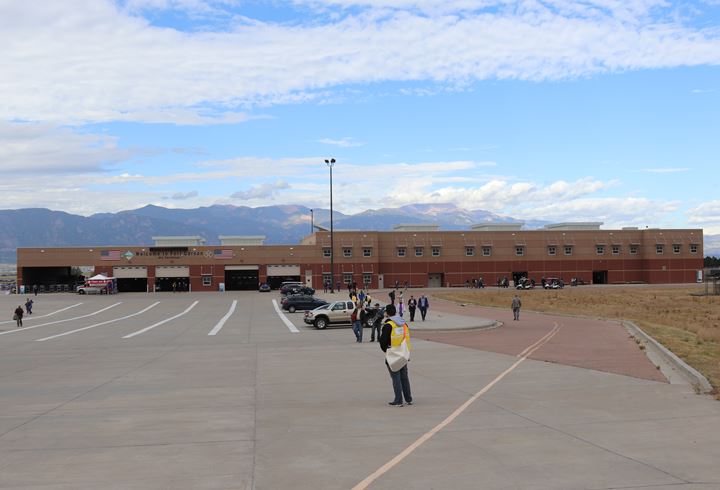
The words between the US flags say: "Welcome to Fort Carson" which
is nine miles to the southwest. There are matching overhead doors
on the west side of the building allowing for the processing of military
vehicles on arrival or departure. I was in the building to
purchase my ticket for the show, and it is set up for processing troops
that are coming or going. While this location allows for lots of
vehicle parking and has the large ramp, I wonder what happens if the 4th
Infantry Division has to deploy during an airshow.
There was a long line
waiting outside the facility waiting for the gates to open at 8:00 AM
resulting in a big surge of spectators trying to get good seats along
the crowd line. This photo was taken at 9:53 AM and the surge is
over. The persons on the right are walking towards the show.
Several on the left of the photo are leaving already.
The Weather: I
had been checking the weather on a daily basis before I made the trip out to Colorado
Springs. The morning I left the forecast showed
some clouds and the upper 60s for a temperature. Monday evening
upon my arrival at Colorado Springs I looked at the weather, and
wondered where the rain forecast for Saturday and Sunday had come from.
The days I was in the area previous to the show all had great weather
with temperatures sometimes reaching 90 degrees F, and abundant
sunshine. That all started to change Friday afternoon as clouds
started to move in during the practice show. Saturday didn't start
too bad, and as the previous photos indicate there was some blues
skies around. While the forecast rain never developed on Saturday
while I was there, the temperature started down, the wind picked up, and
the ceiling started coming down, finally ending the flying portion of
the show right after 2 PM. Some persons showed up shorts, sandals
and t-shirts. They didn't last long and had to leave. The
beer and lemonade stands had a dismal business, if any at all.
Meanwhile the concessions having sweatshirts were selling them as fast
as the operators could put them on the table.
The Show:
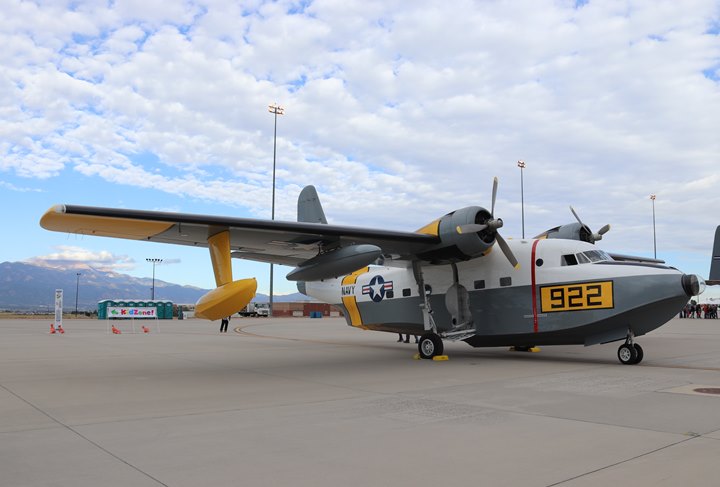
This Grumman HU-16 is part of the
National Museum of WWII Aviation that was
strictly static for the weekend.
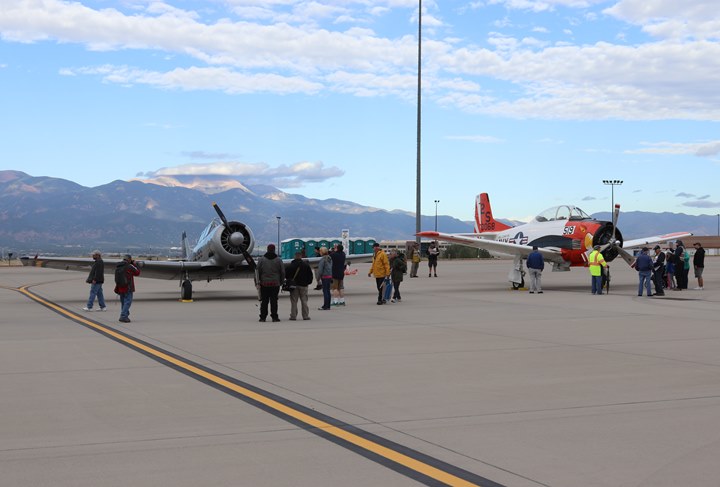
Lockheed P-38F Lighting
"White 33" Serial Number 42-12652: Within five minutes of
visiting the Peterson AFB Air and Space Museum at the north end of the
Colorado Springs airport, the docent was telling me about P-38 "White
33" that was going to be at the show. Others I talked to during
the week about the show would ask if I knew about this P-38.
The 39th Fighter Squadron,
35th Fighter Group of the Fifth Air Force was the first fighter squadron
in the 5th AF to receive the P-38 during WWII. The squadron had
previously been flying the Bell P-39 Aircobra. Among those new
P-38s was "White 33." Commanding the 39th at the time of
transition was Colonel Frank Royal. For the next year Col. Royal
stayed with the squadron before being rotated back to the United States.
"White 33" was finally written off after the nose gear collapsed on
landing. It was left in the jungle of Papua, New Guinea until it
was retrieved with several other P-38s and a razorback P-47.
During the restoration of
the aircraft at Westpac, it became known that Col. Royal was still
alive. The restoration took top priority among the work being
done, and when complete Col. Royal was able to visit and sit in the
cockpit of the P-38. He was then placed in a chase plane which
flew in formation with "White 33." Frank Royal passed away a
short time later.
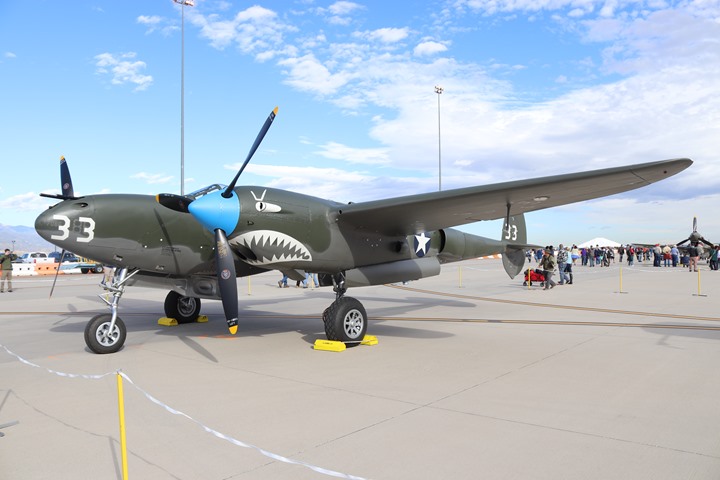
The restoration is immaculate and accurate
as to what "White 33" looked like while in New Guinea.
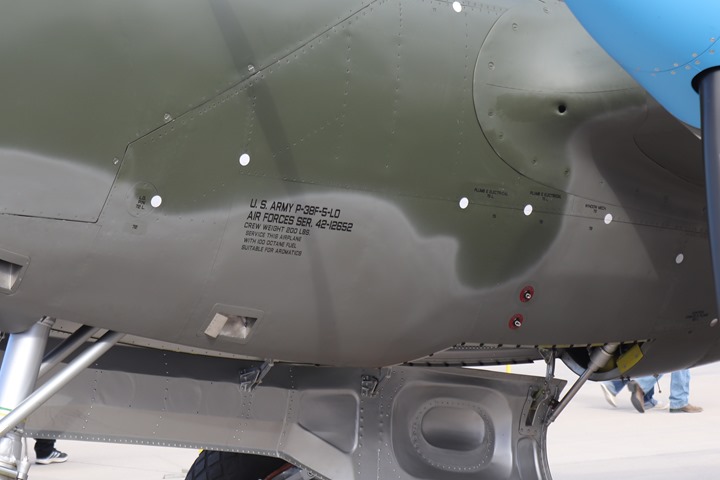
At Westpac the docent explained that the
white dots were part of the authenticity of the restoration.
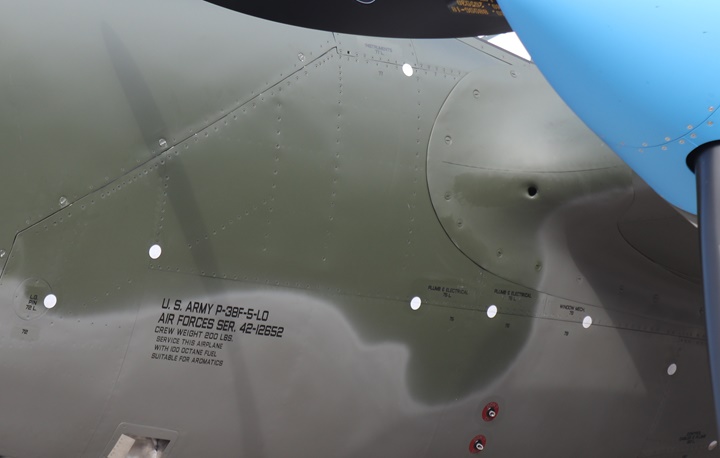
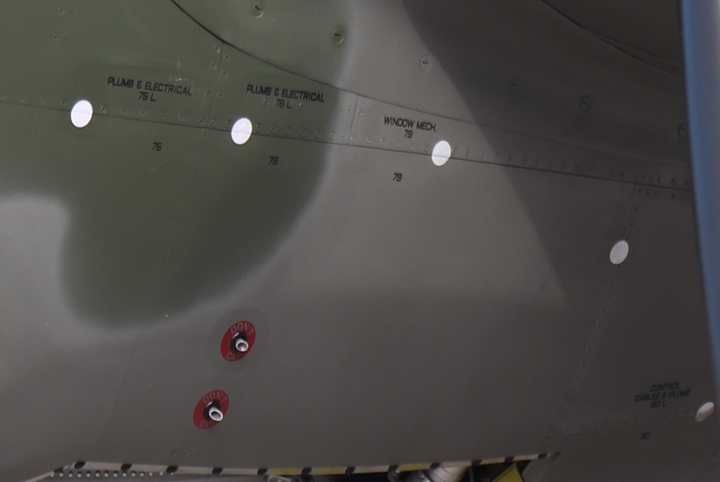
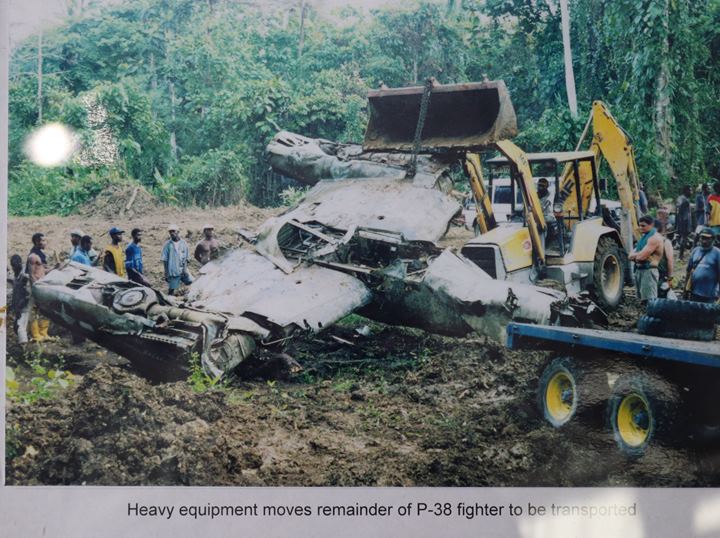
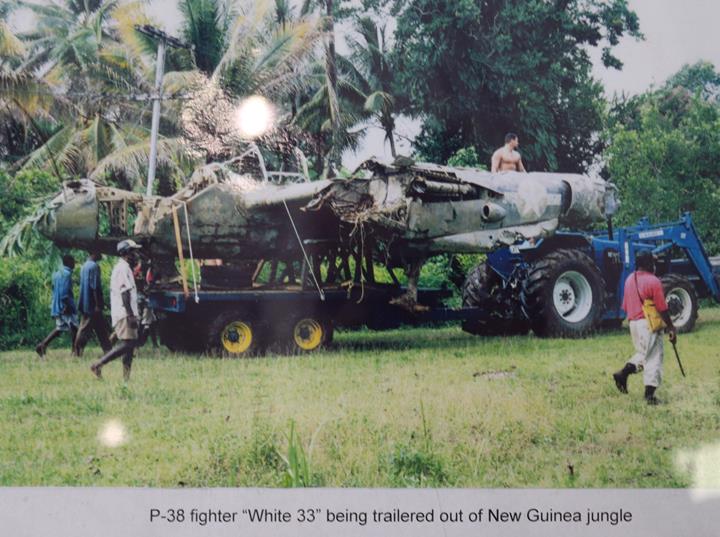
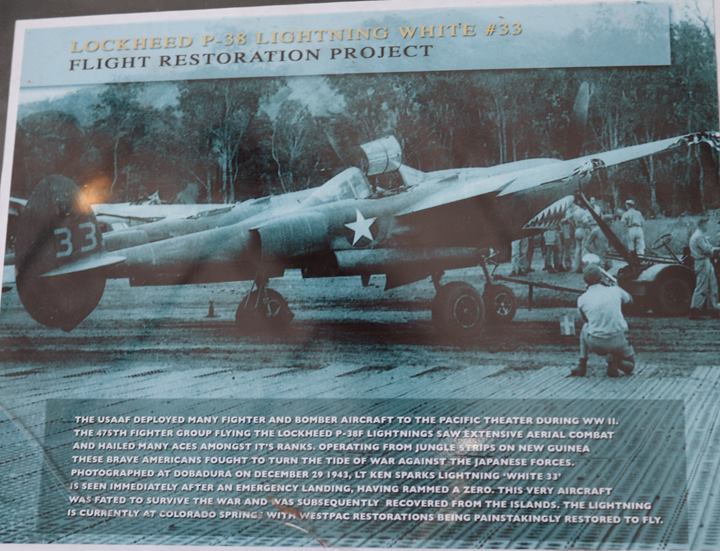
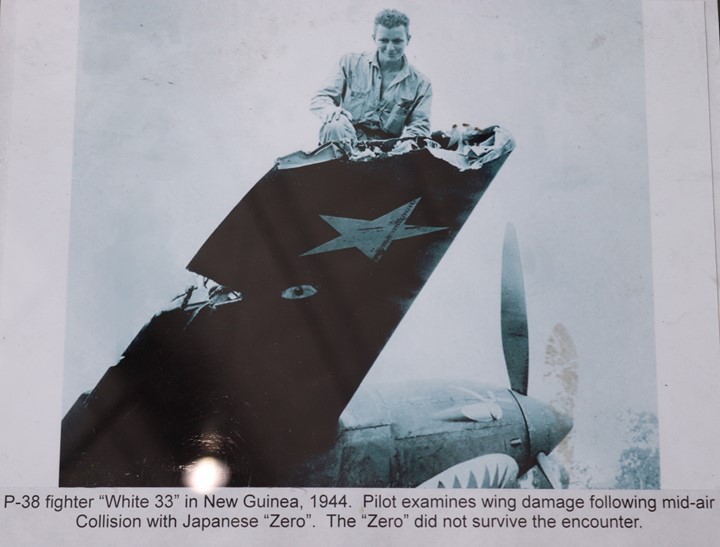
Unfortunately Lt. Sparks did not survive the war.
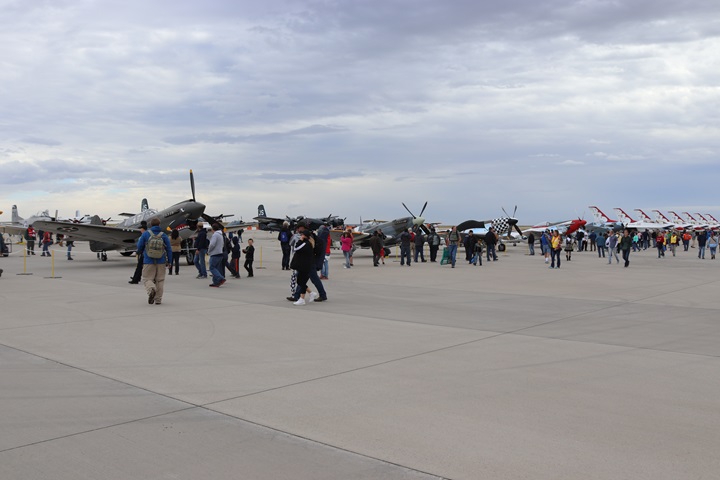
Lots of warbirds filled the hot ramp!
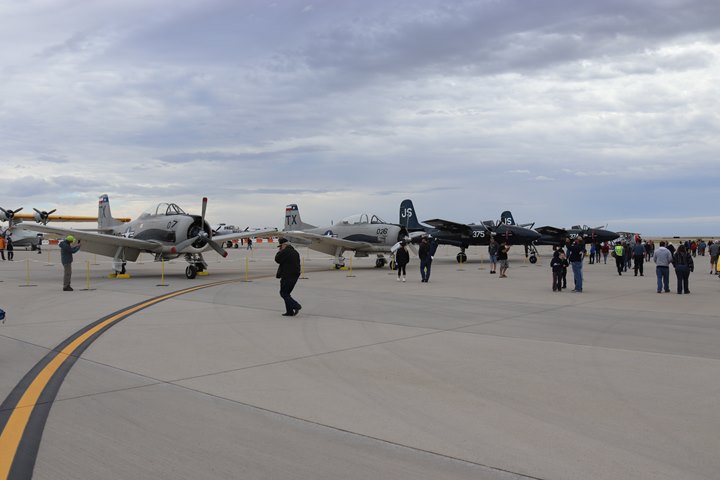
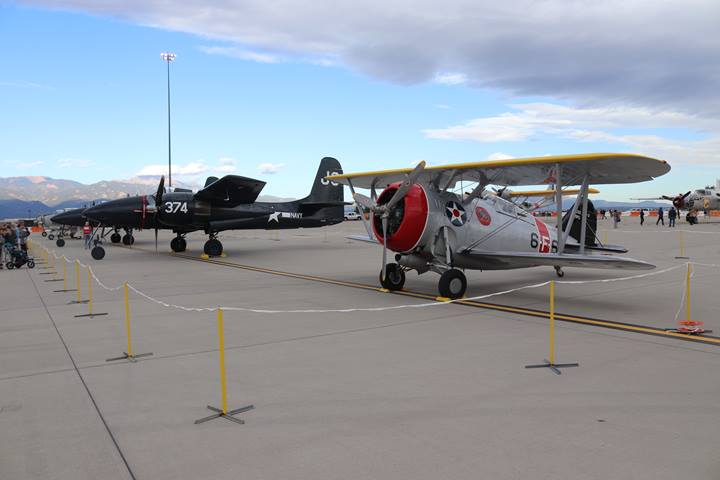
What a comparison in the rapid pace of
aviation technology! The Grumman F3F first flew in March 1935.
Eight and a half years later the
sleek F7F flew for the first time in November 1943.
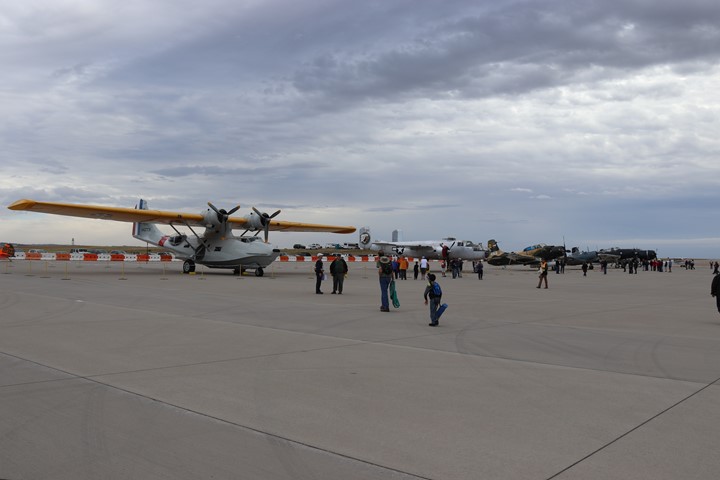
All of the aircraft in the bomber row;
PBY, B-25 AD-5, SBD, and (2) TBMS are part of the National Museum of
WWII Aviation
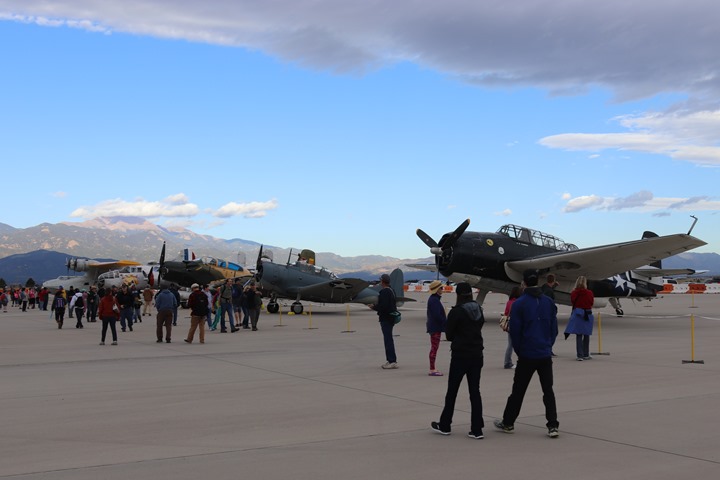
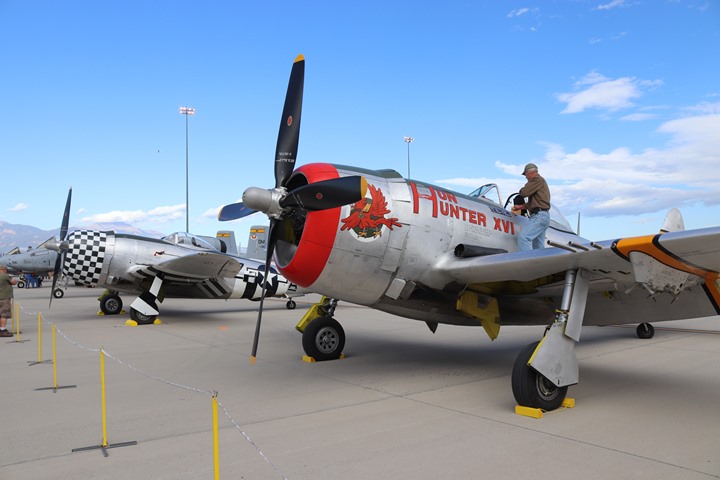
Neil Melton flew six hours from his museum
in Sevierville, TN to be the second P-47 at the show. The last
time I had seen and talked with Neil was at the 2012 Indianapolis
Airshow.
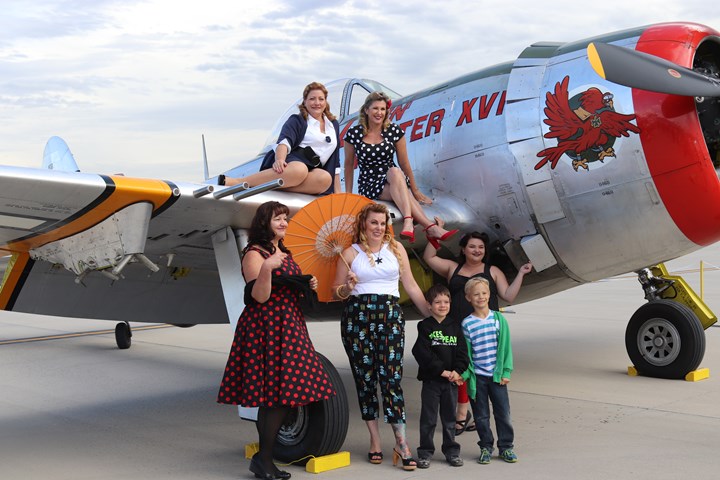
Just as we were finishing up our
conversation, these five young ladies asked Neil if they could use his
P-47 as a backdrop for taking photos with spectators. At this
point in the morning, it had warmed up some, and the women are
sleeveless in several cases. Later in the day I imagine they found
something to cover their arms.
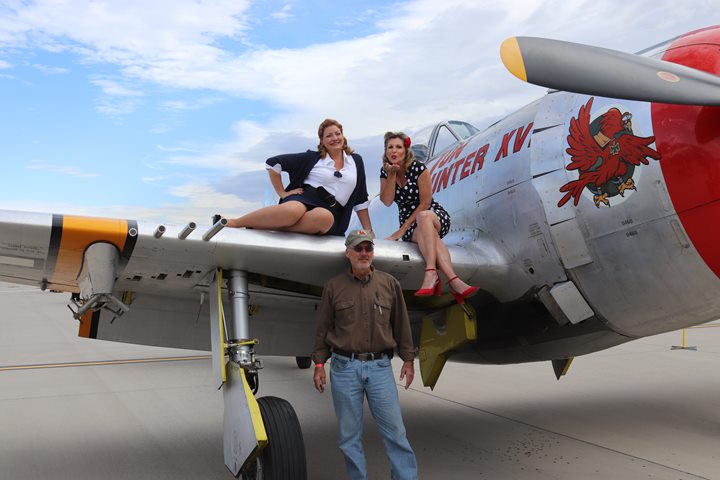
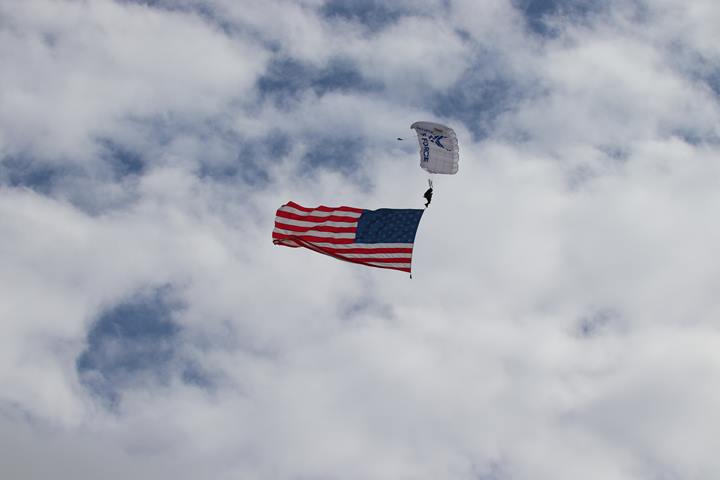
At noon there was still enough ceiling for
the flag jump by the "Wings of Blue" from the nearby US Air Force
Academy. However, one of the team did end up coming down through a
"wispy" cloud. The ceiling was starting to come down.
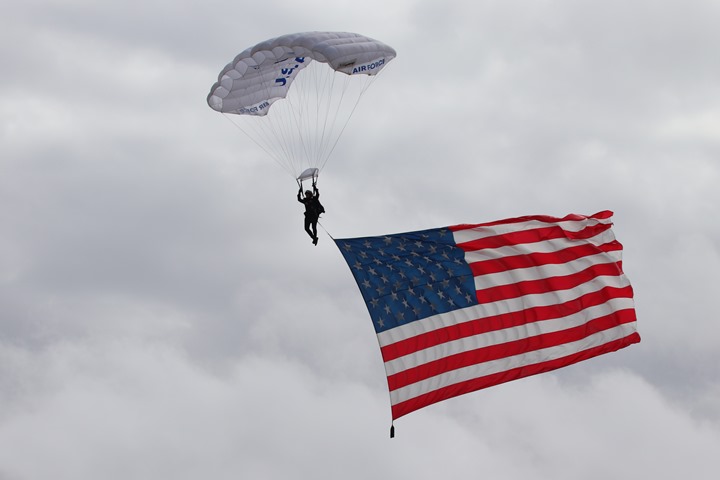
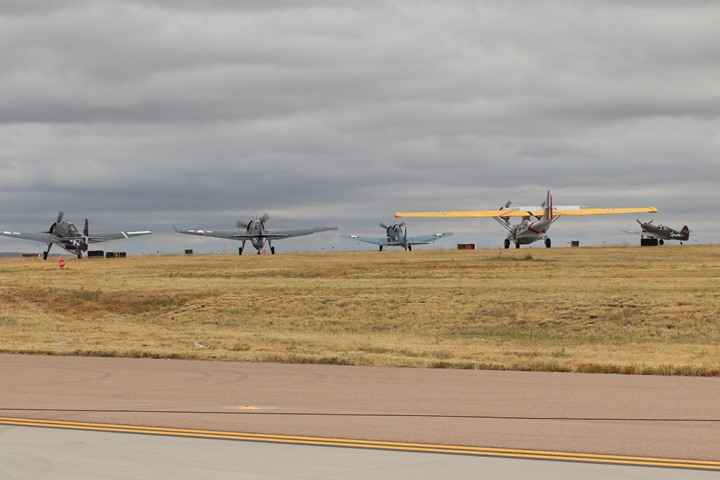
The bombers and the P-40 are doing their
run-ups at the end of runway 17L. The P-40, along with the
Spitfire that was at the show were from the Texas Flying Legends Museum.
The P-40 did a low level aerobatic routine after the bombers flew.
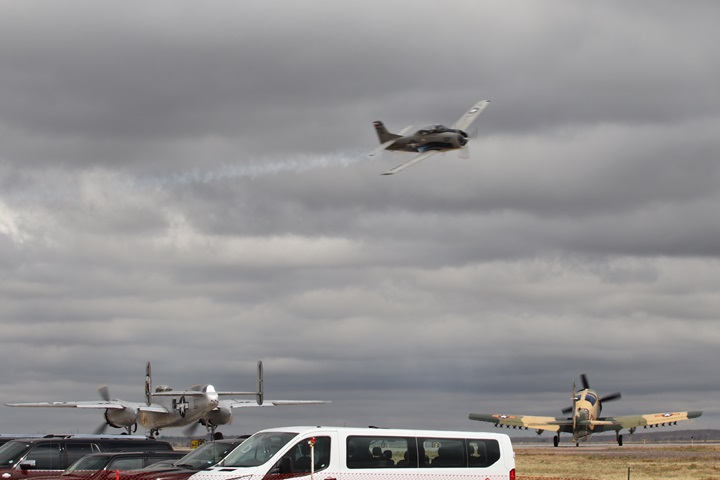
The first warbirds to fly during the show
were the Trojan Phlyers Aerobatic Team from Texas.
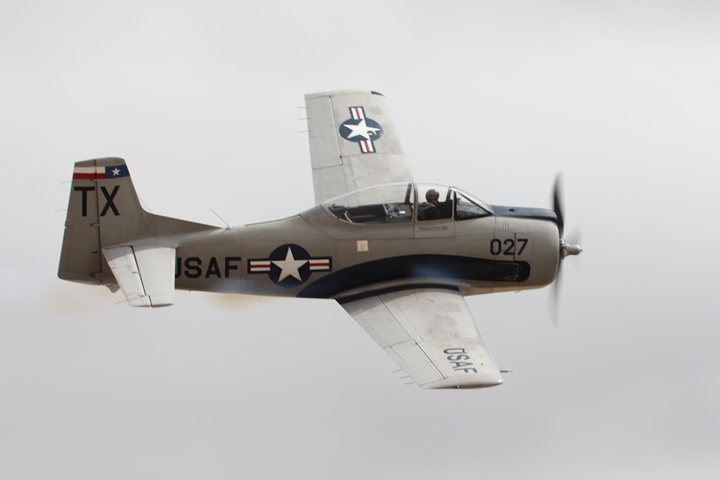
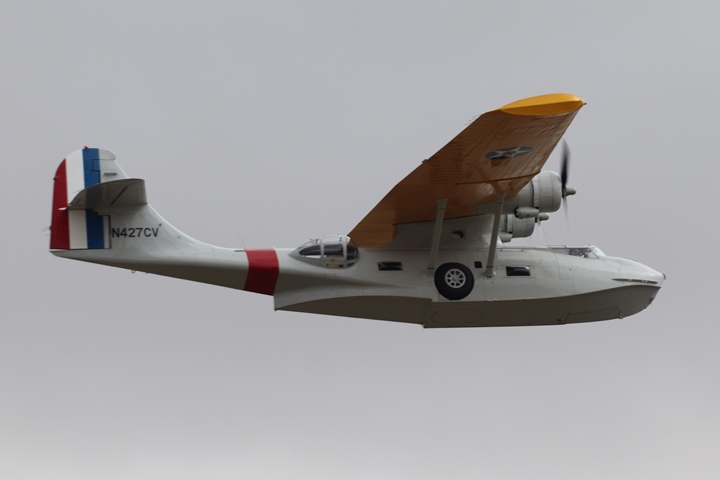
The PBY was the first bomber in the air.
I expected the rest of the bombers to take off right after it, and all
of them do multiple fly-bys in trail. This was not the case as the
Catalina did two passes and landed. I then assumed the PBY was
flying by itself because it was so much slower than the rest of the
bomber group.
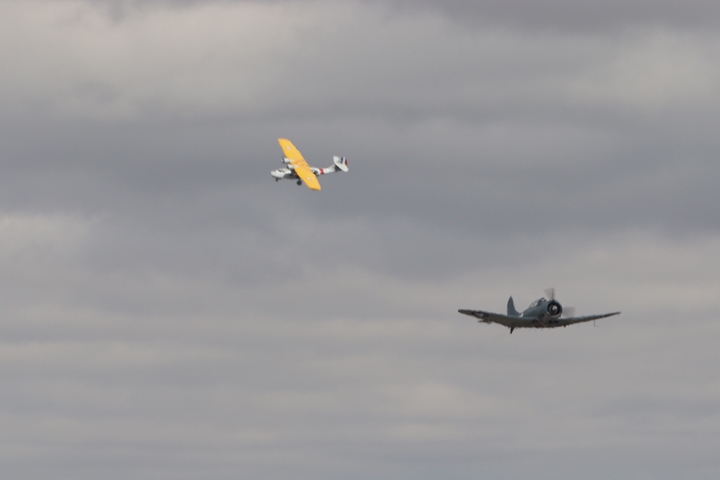
It turns out that each of the bombers, and
later the fighters would fly in singly, or in twos. While this is
one of the largest and best line-up of warbirds I witnessed in 2017, the show
was using the limited number of warbirds in the air at one time to fill
the time until the USAF Thunderbirds were to fly at 2:45. This
made for a lot of dead time in front of the crowd. For the warbird
enthusiast the wait was bearable. For the normal airshow spectator
this made for a slow and somewhat boring show. Warbirds should not be
boring! If there is a future event, the show needs to re-think how
to showcase the warbirds in a more exciting manner.
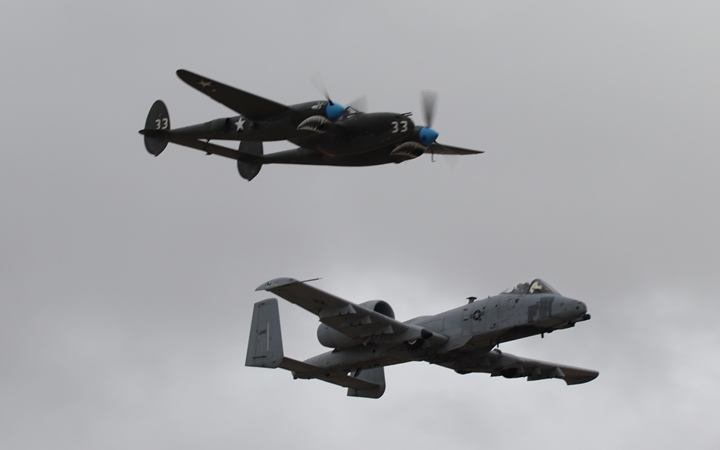
The Heritage Flight.
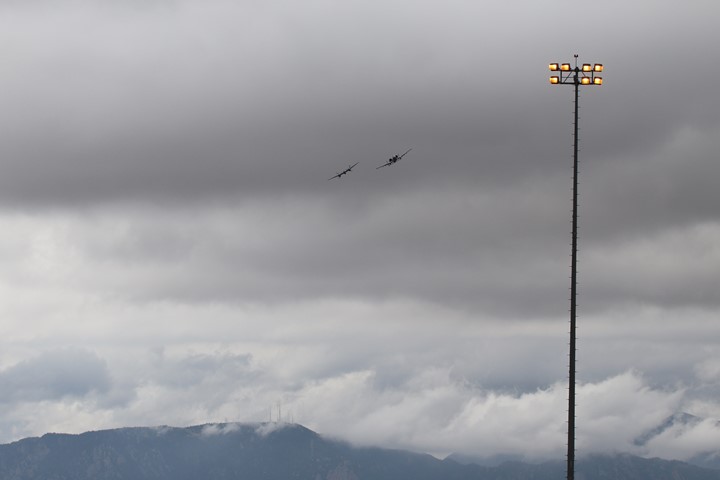
I really wanted to
get a photo of the Heritage Flight with Pikes Peak in the background.
This did not work out. I did get this photo of Colorado Springs'
other famous mountain in the background, Cheyenne Mountain. The
antennas are just visible on top of it. These are radio and TV
transmitting antennas, and have nothing to do with the NORAD complex
inside the mountain.
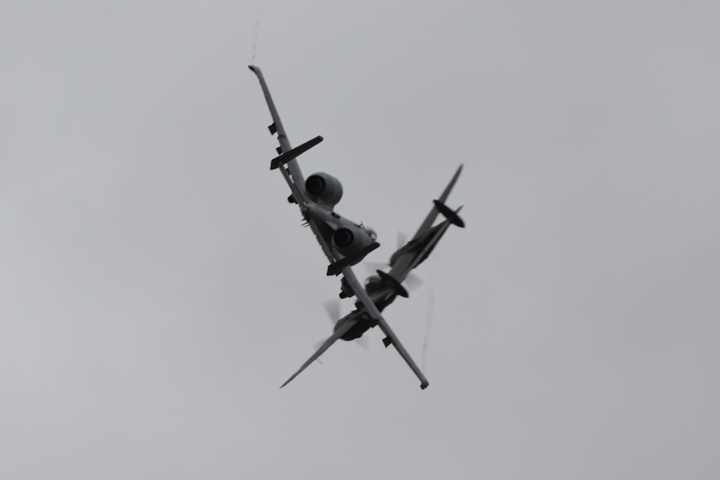
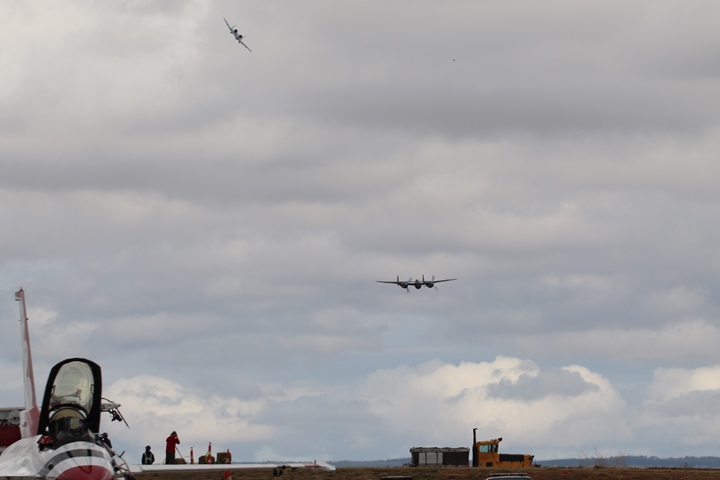
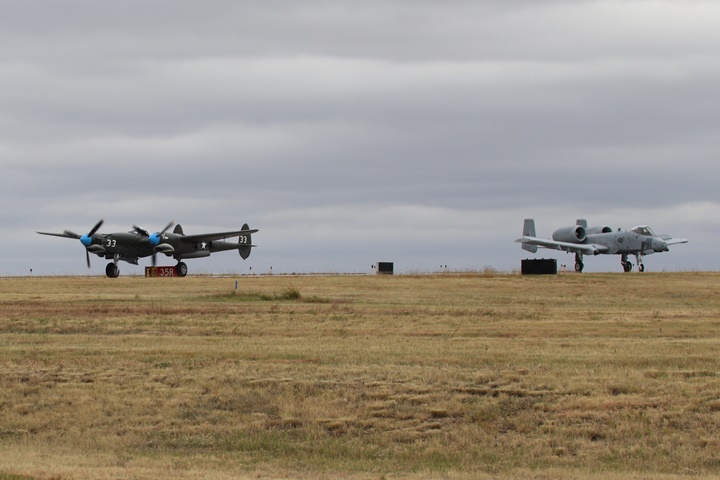
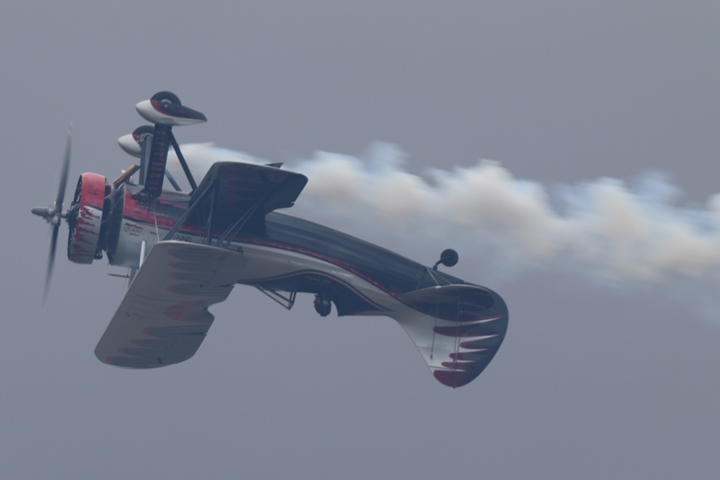
Kyle Franklin in Dracula woke up the
semi-comatose and cold crowd in a hurry! People stopped texting on their
cell phones, stood up and watched the excitement of his act. One
person was reading a book between the extended time the warbirds came
by. It was at this point I realized that the crowd was finding the
warbird flying slow and not very exciting.
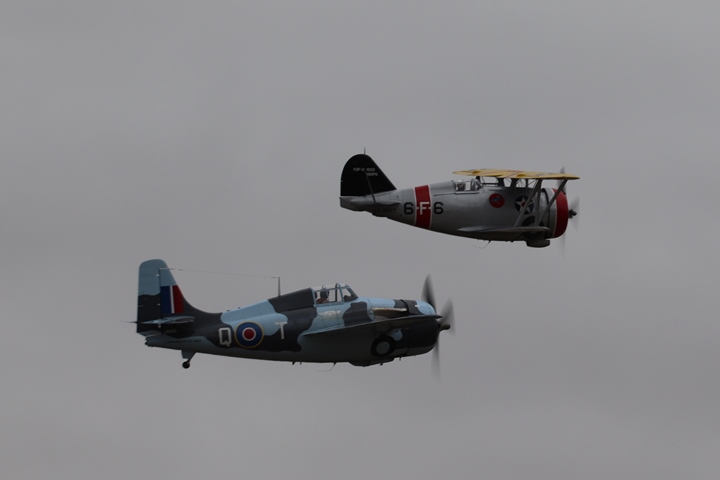
After Kyle came the fighters.
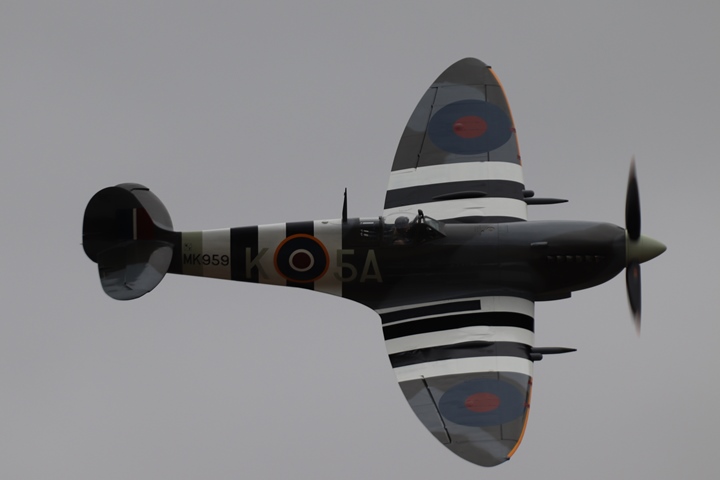
Warren Pietch provided several low passes,
which is his normal, in the Spitfire Mk IX.
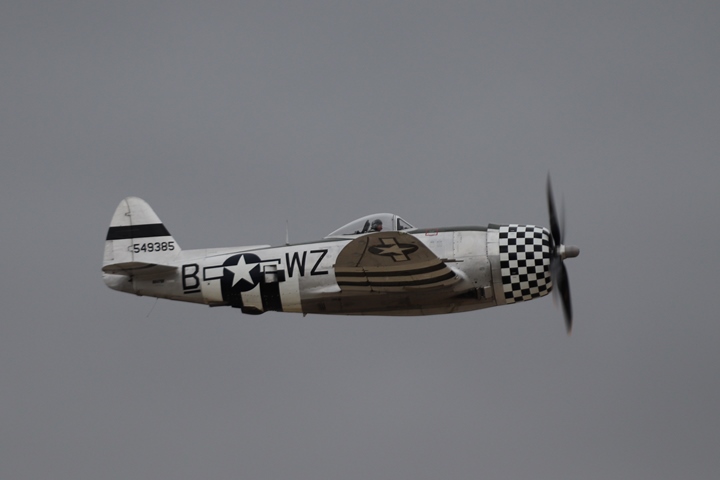
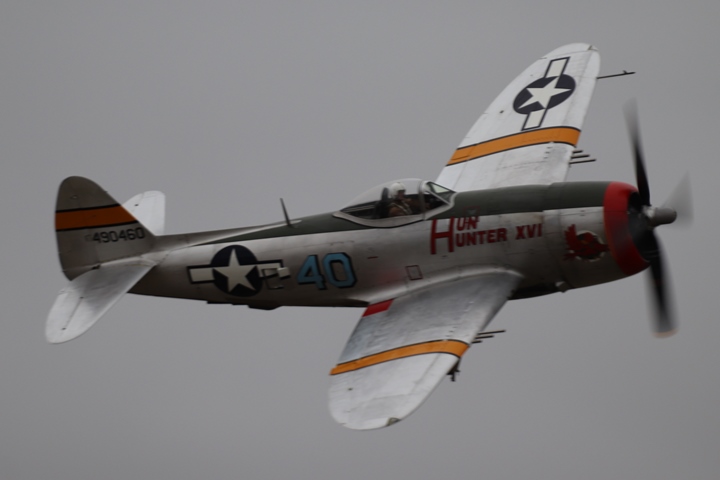
This was my last photo at 2:07pm. On
the scanner I heard air boss broadcast that the airport had just gone
IFR. He started to land the P-47s and Warren Pietch in the
Spitfire, who was waiting to the south of the airport for his time slot
for an aerobatic routine. The Mustangs and Tigercats at the end of
the runway were called back to the ramp, and were taxiing in when I
left. There was no reason to stay. If anybody was going to
fly, it was going to be the Thunderbirds, and I had seen them in
practice the day before. As I was leaving I heard the announcer
telling everyone to stay, as the low ceiling was temporary, and there
would be more flying. As I got to my vehicle, a light rain
started. It had held off until then.
Epilogue: When I returned home I
checked to see what information was available on the show.
For Saturday's show I found this headline
from a the Colorado Springs Gazette: "Thunderbird air show is cancelled
due to low cloud ceiling."
For Sunday's show I found this from the NBC
affiliate in Denver: "2017
Pikes Peak Air Show awes hundreds of spectators in Colorado Springs."
"Hundreds of spectators?" Airshows are
supposed to have thousands, and tens of thousands of spectators.
Photos of Sunday showed a wet ramp and the same dreary conditions that
prevailed on Saturday. The show went on, but the weather took its toll on the
crowd for both days.
The show was really well organized. I
could tell the airshow committee had done its research, and much
planning and thought had gone into it. It will be interesting to
see whether another attempt is made in the future. With the same warbird line-up, I would go again. I still have
places to visit en-route to, and in Colorado. I can always find
places to visit that make it worth my while for the long trek involved.
Side Trips
The total trip was eight days
covering 3,200 miles that included not only the airshow, but 18 museums,
forts, and historic locations. Below are four of the stops.
The Peterson Air and Space Museum
Peterson AFB, Colorado Springs, CO
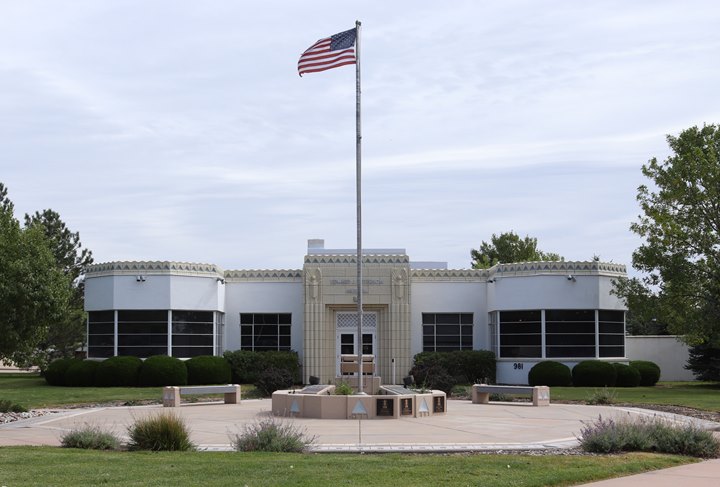
All aviation museums are the same, as they
all have aircraft and aviation items on display. Yet they are all
different, as each one has something that makes it stand out from the
others. In the case of the Peterson Air and Space Museum one of
those items is this building, which is the main entrance to the museum
complex. This is the original air terminal building for the
Colorado Springs airport. Today it is in the middle of Peterson
AFB.
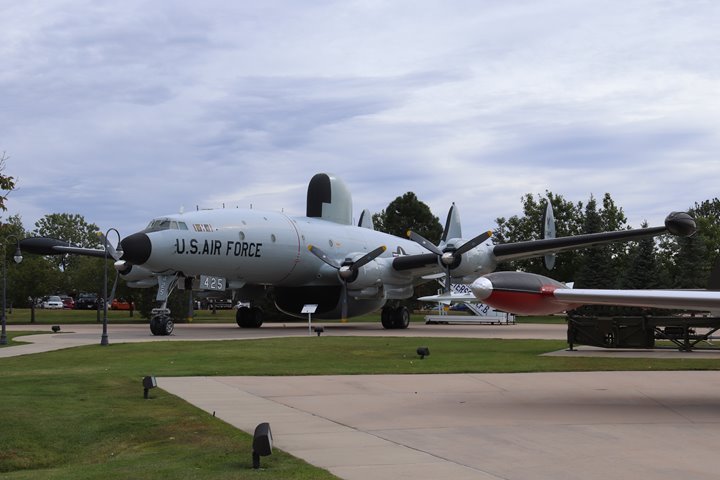
Other museums have EC-121s on display, but
at the Peterson Air and Space Museum a visitor, with a docent escort,
can tour the inside of the aircraft.
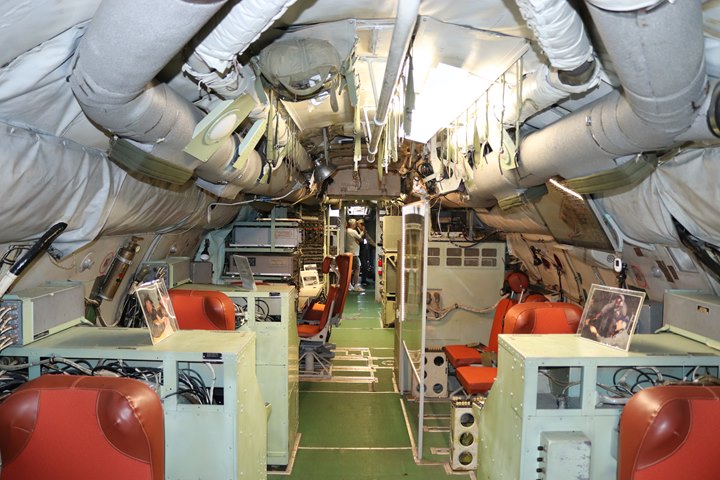
Everything is left just as it was on its
last mission.
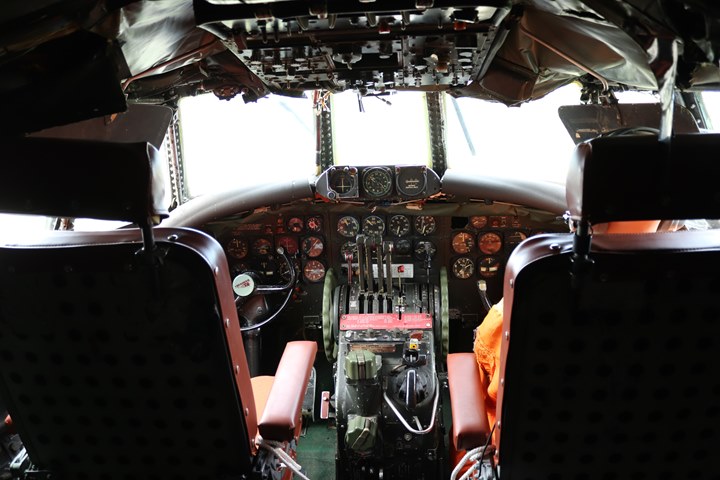
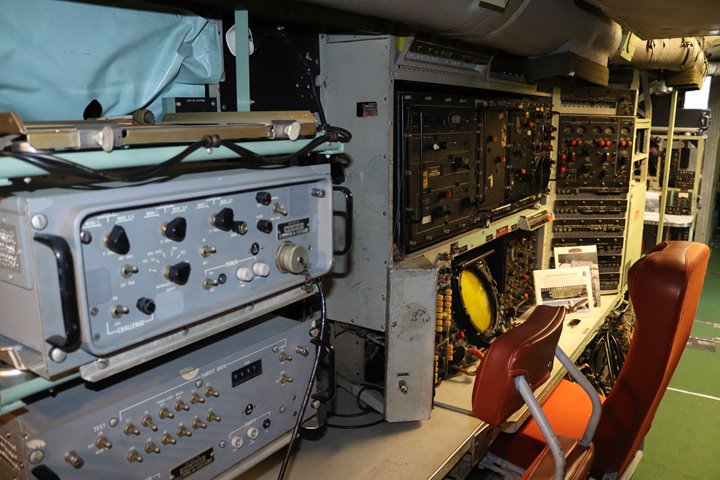
The National Museum of WWII Aviation
Colorado Springs Airport, CO
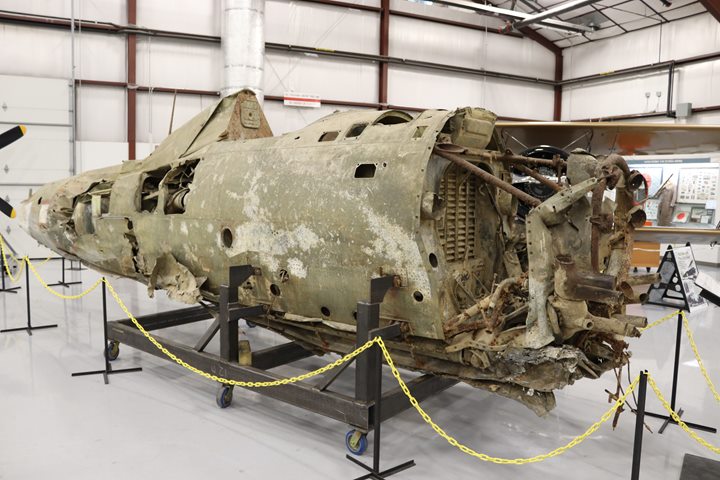
Unique to this museum is this P-47
Razorback, which came back from New Guinea with "White 33." Like
the P-38, it is a combat veteran. When restored, it will be the
only flying razorback P-47 that has a war record.
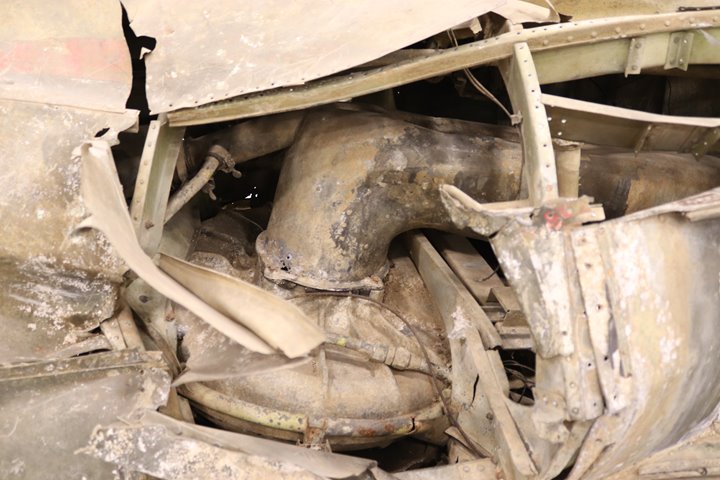
The turbo supercharger can be seen through
the hole in the sheet metal.
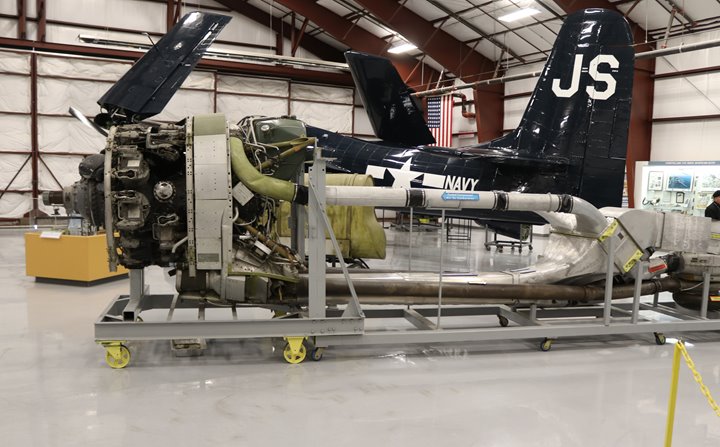
Even more unique is this display of the
turbo supercharger system in the P-47.
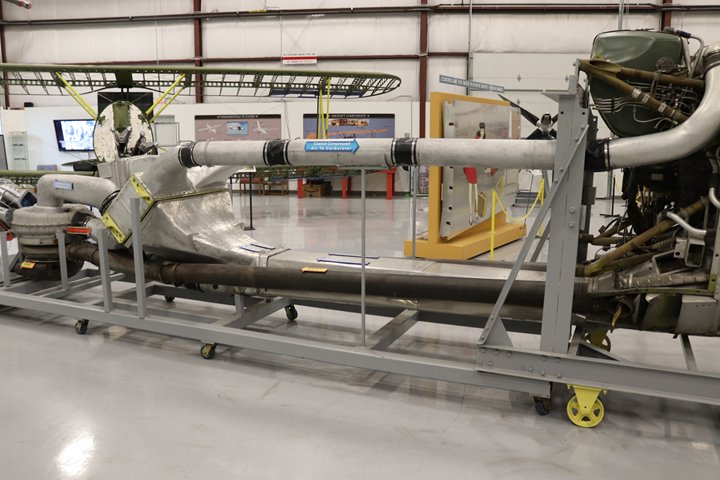
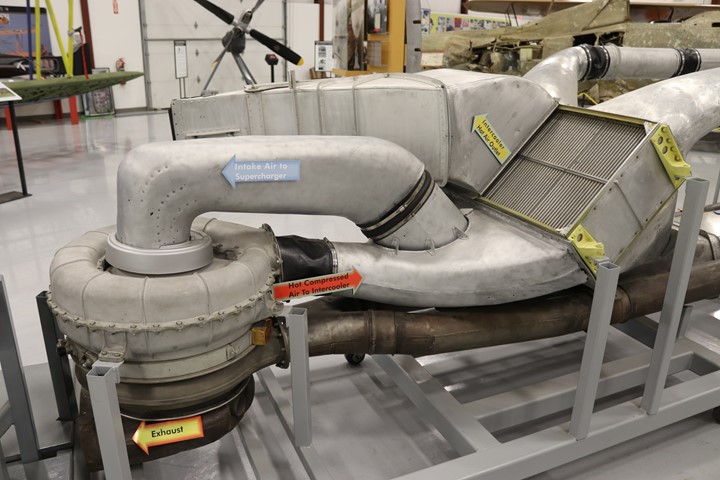
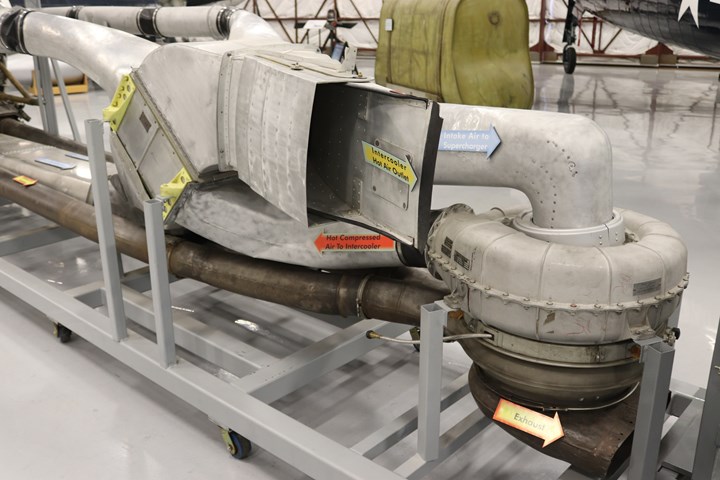
Fourth Infantry Division and Fort Carson
Museum
Fort Carson, Colorado Springs, CO
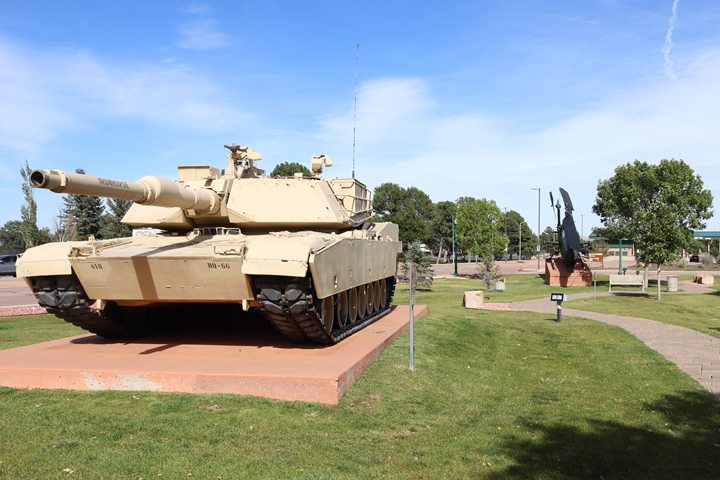
The M1A1 and AH-1 are on display at the at
the street entrance to the main gate to Fort Carson.
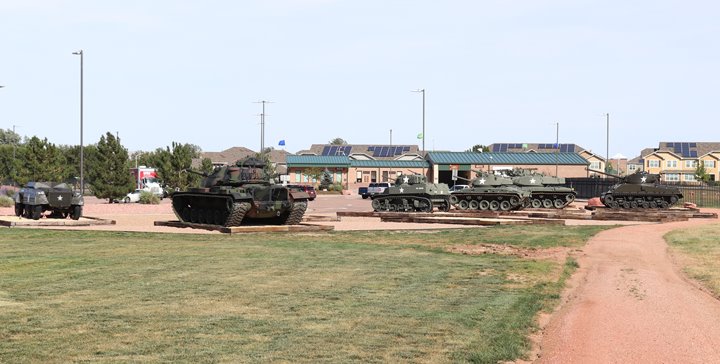
There is more armor on display by the
parking lot for the fort's visitor center. The museum is located
next to the visitor center, outside the main gate.
Fort Lupton Recreation
Fort Lupton, CO
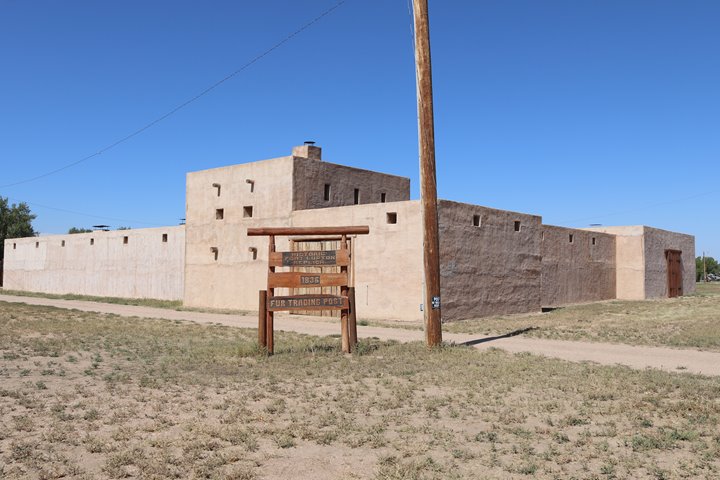
This is a creation of an adobe trader's
fort. The original was built by Lancaster Lupton in 1836 to trade
with the native Americans in the area.
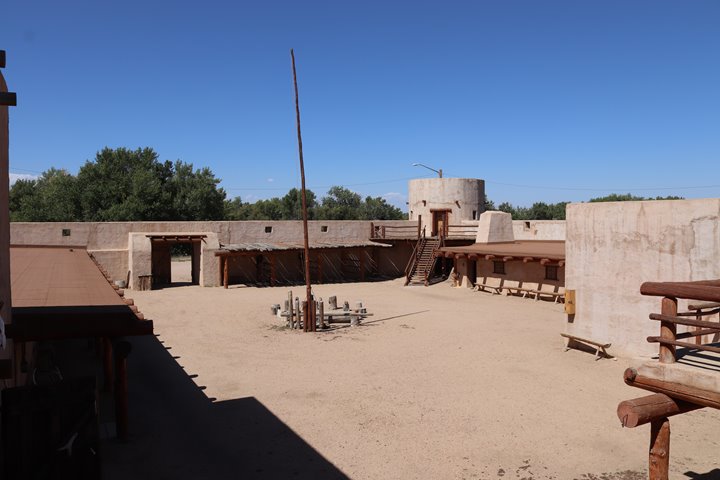
The South Platte Valley Historical Society
raised $250,000 for this excellent recreation of the original.
Volunteers did all of the work.
Bent's Old Fort
La Junta, CO
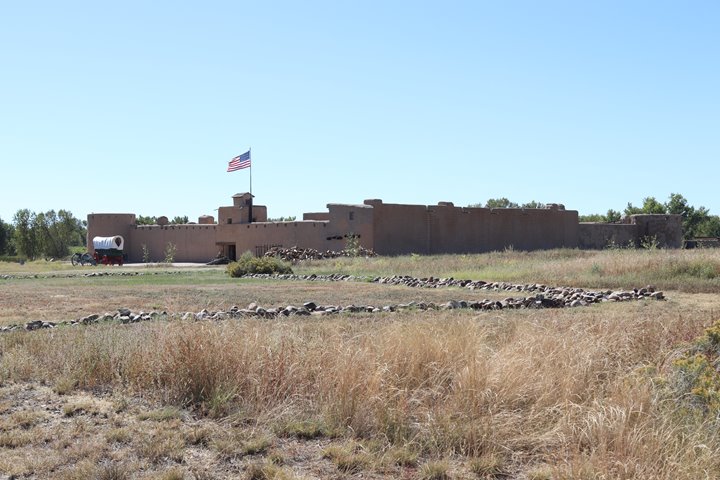
This fort was rebuilt by the National Park
Service on the original foundation. The trees to the south of the
fort indicate the location of the Arkansas River. When the fort
was built in 1834, the river divided the United States and Mexico.
The fort was the main stop on the 800 mile Santa Fe Trail that passed by
the fort.
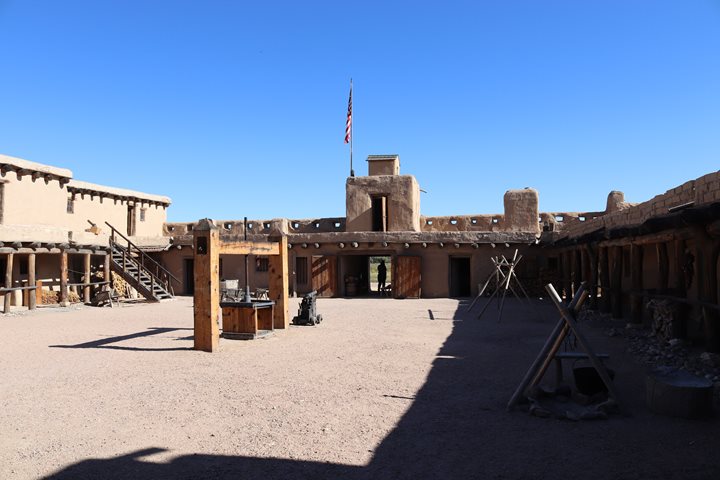
In the center of the fort is a buffalo
press. It would compress ten buffalo hides for shipment to St.
Louis.
|






















































